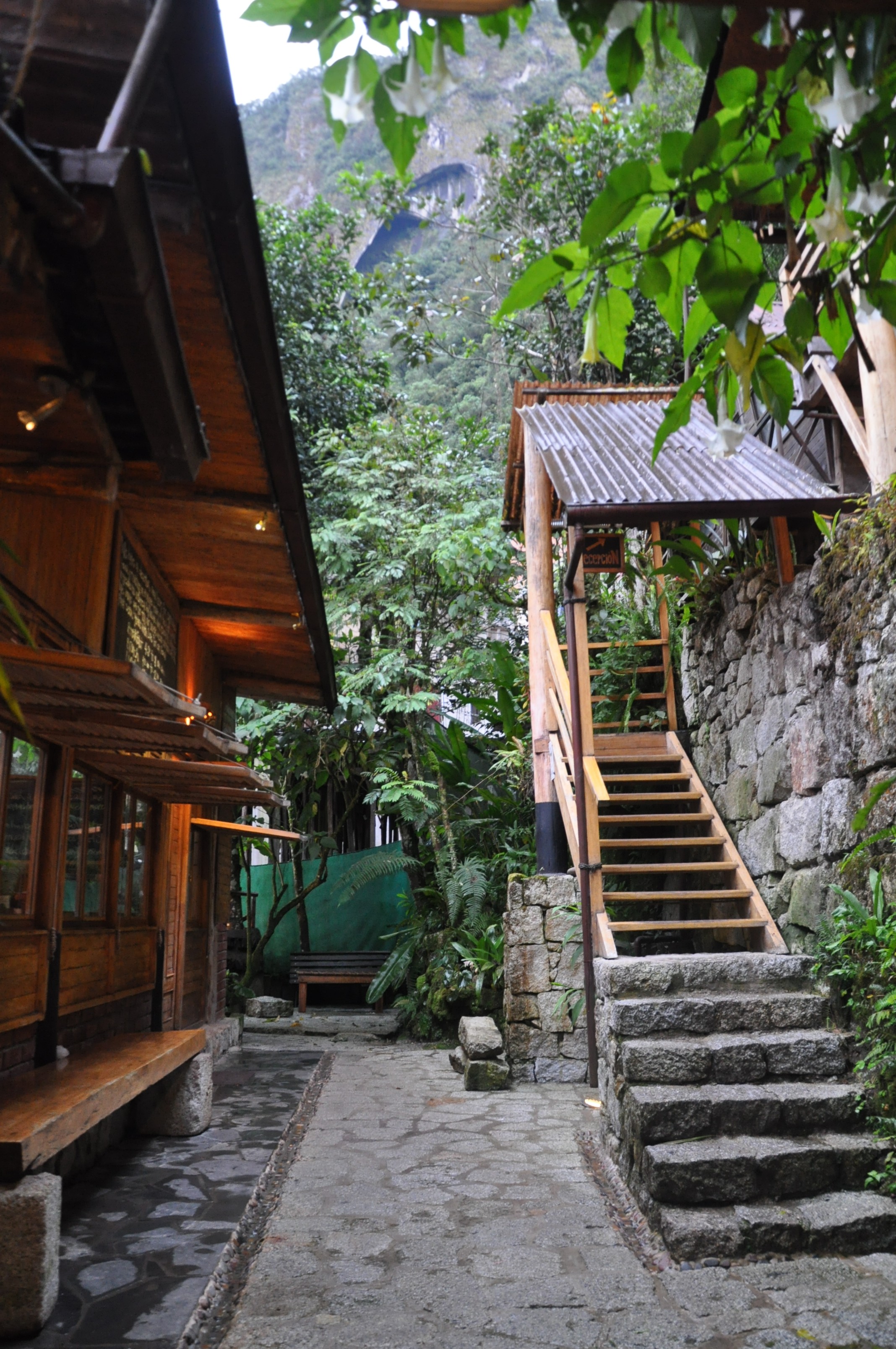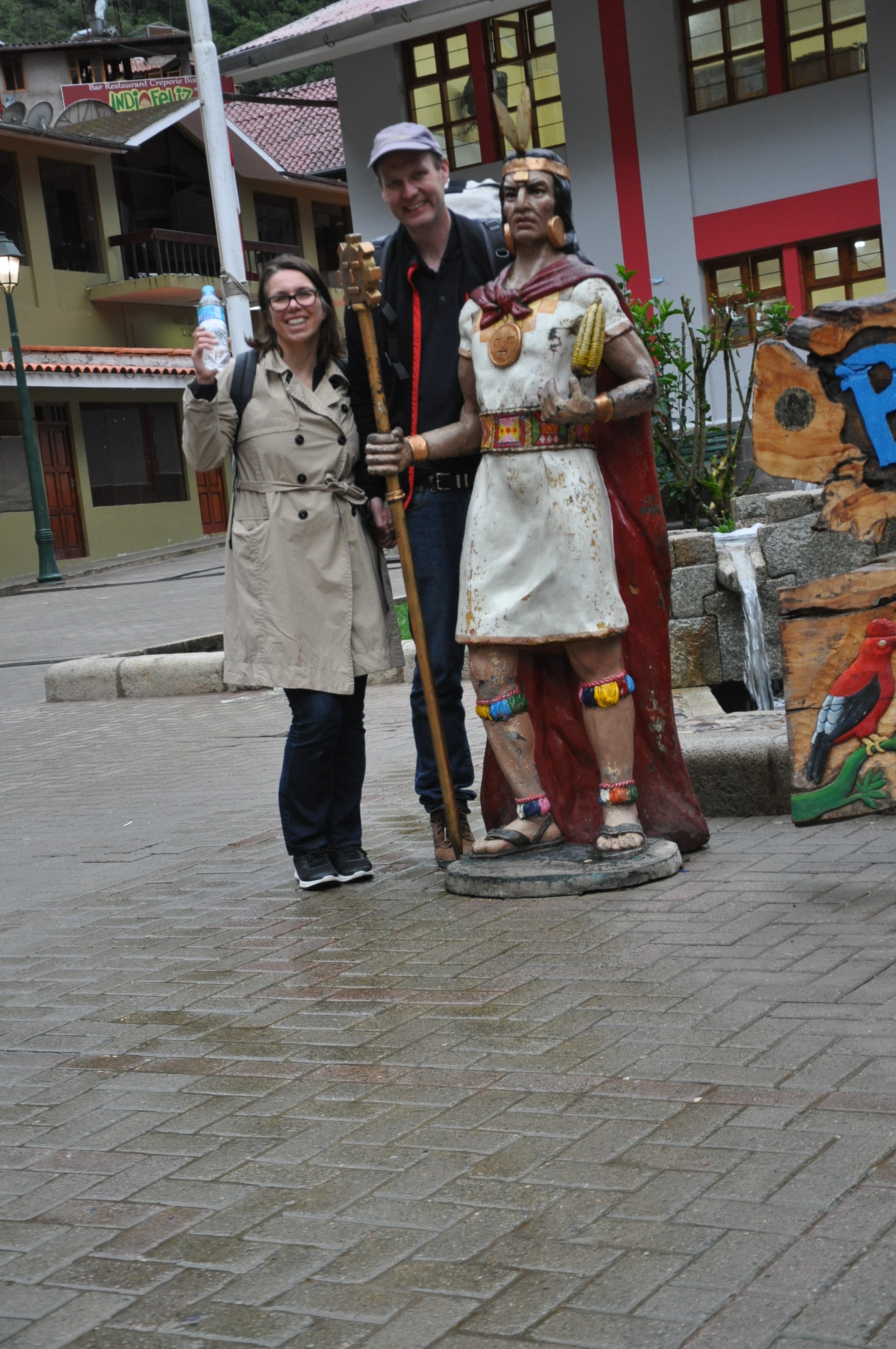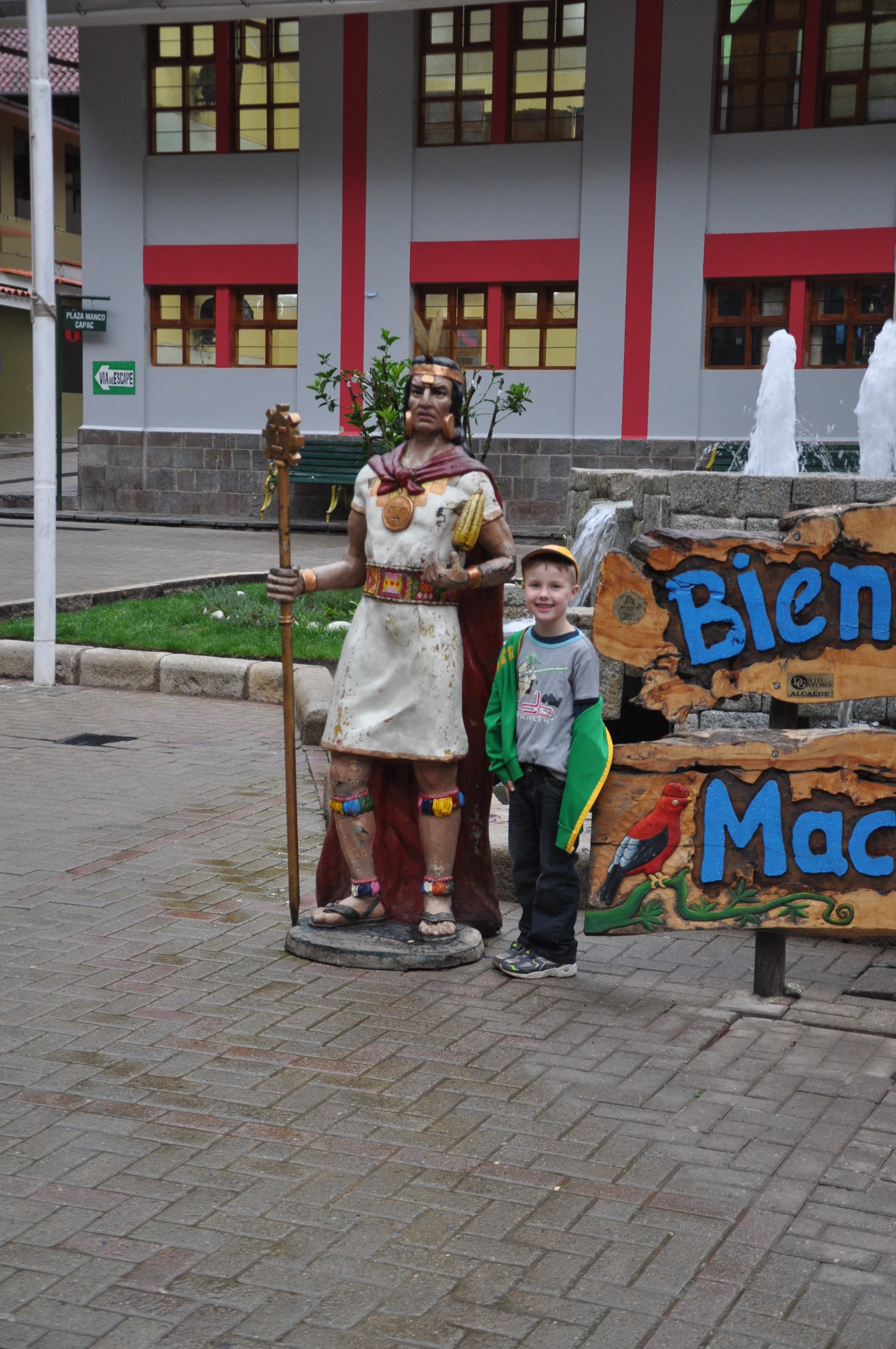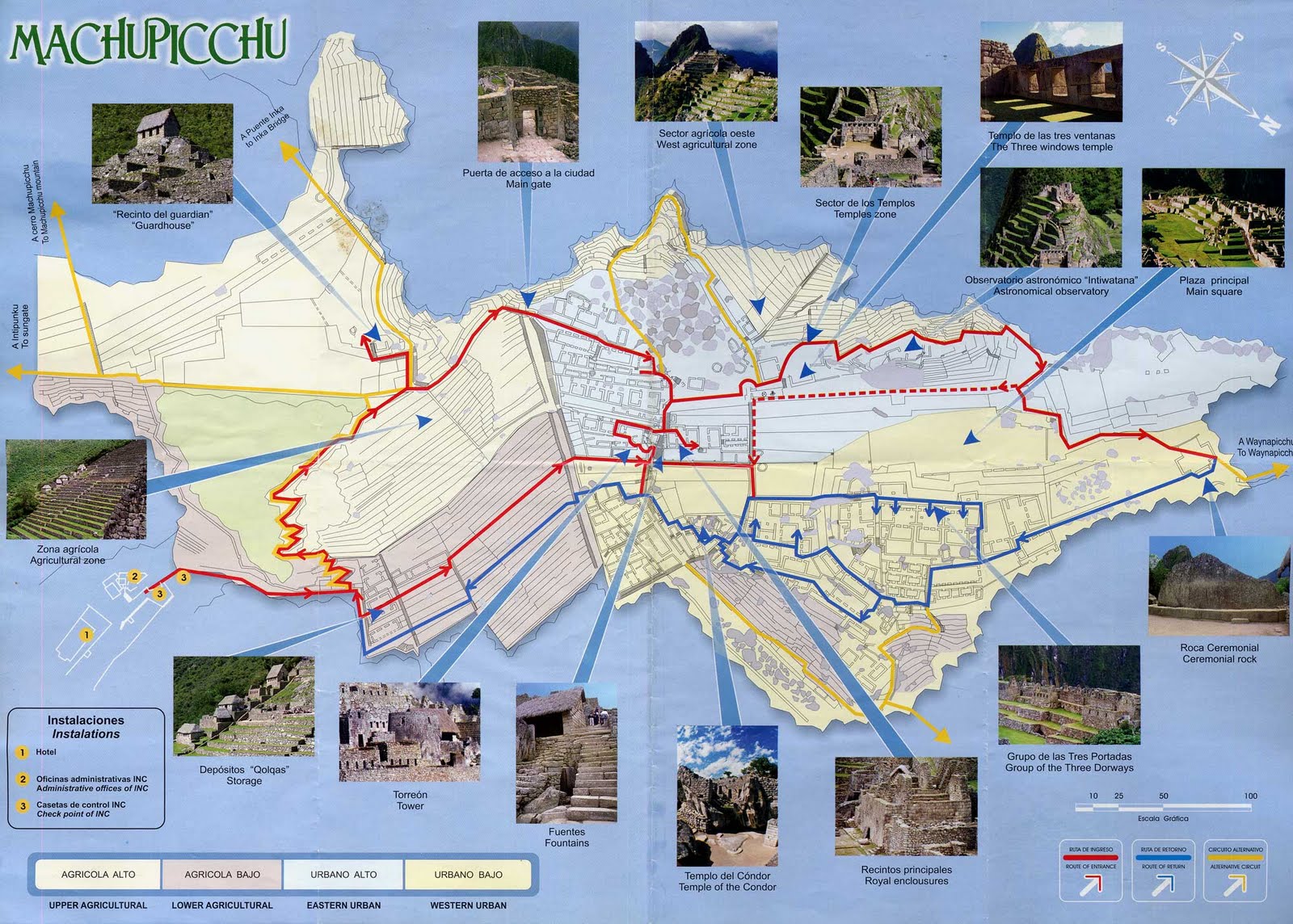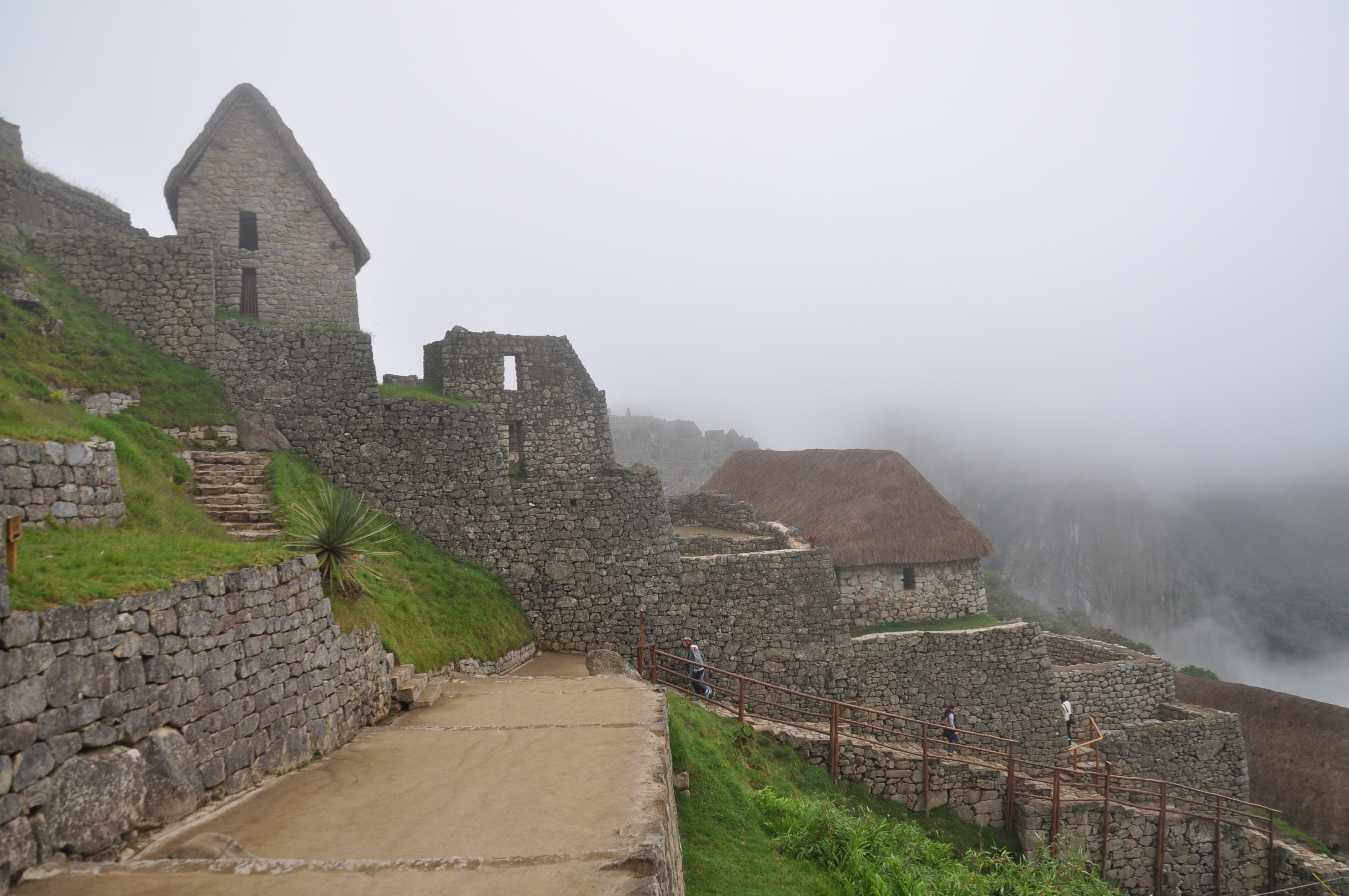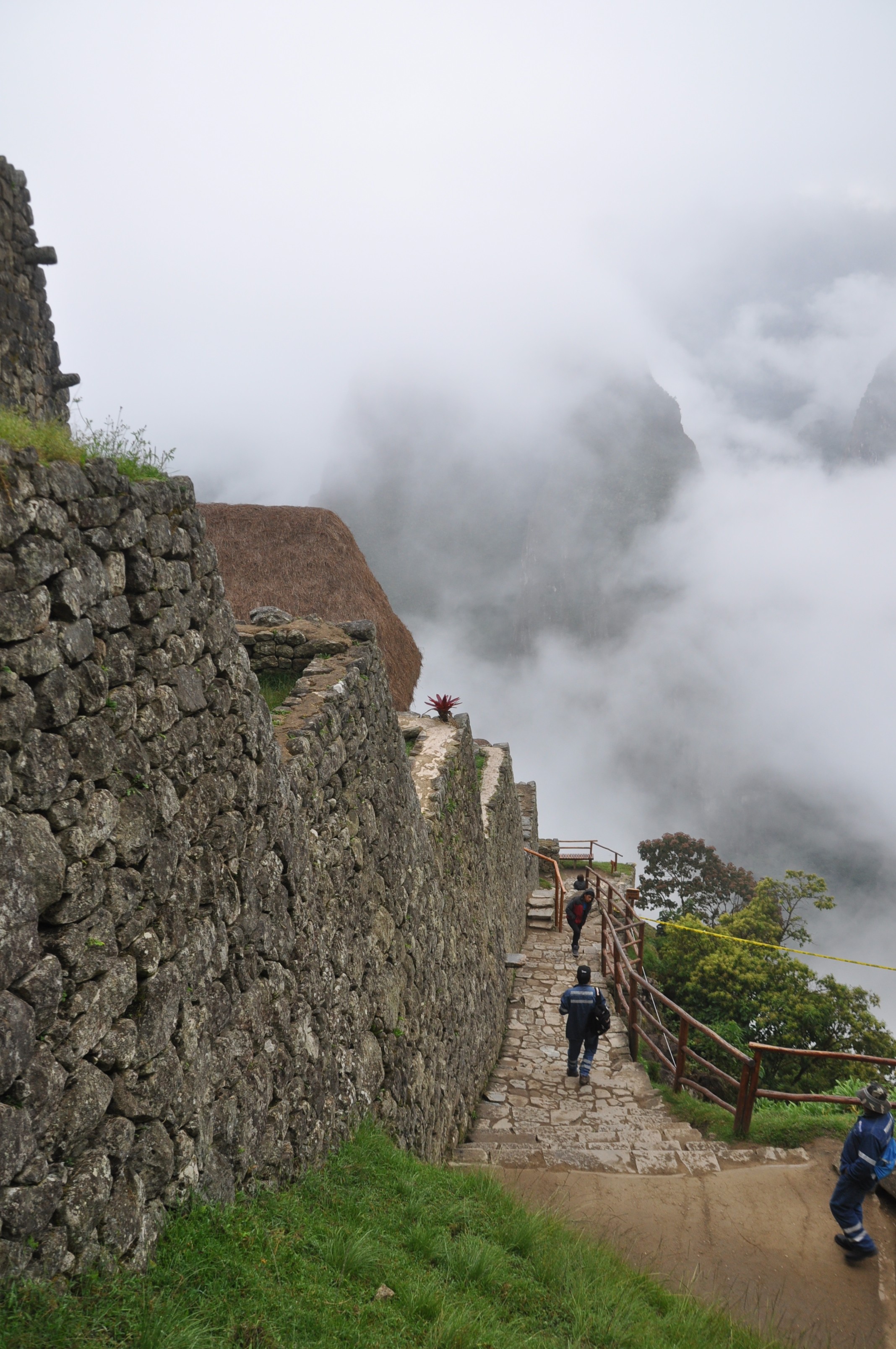History
The city of Machu Picchu was build around 1440 AC at the beginning of height of the Inca empire. It is assumed that the Inca king Pachacútec Yupanqui ordered its construction. Geographically, the city is located on a ridge between 2 mountains in 2400 m height and is rather difficult to access. The logistics during the construction phase were certainly challenging.
Not much is known about its inhabitants, nor its purpose. Most scholar today assume that it was a retreat for the Inca king (like camp David for the America president). That would have made the inhabitants servants to a big hotel. This hypothesis is supported by skeletal remains. These suggest that the people that lived and were buried in Macchu Picchu did not have to work physically hard. They were certainly not the construction workers that build the city. In addition, dental caries indicates that they ate much corn and had a better-than-normal diet. The size of the city supports around a thousand inhabitants.
Around 100 years after its construction, its inhabitants left the city. Maybe, the fled the approaching conquistadors. Maybe, they were wiped out by the small pox. Or maybe, the place lost its purpose with the Inca king being a puppet of the conquistadors. Be it as it may be, the Spanish never found and destroyed the city — which today makes a great place for a glimpse into the time of the Incas.
As Felix and myself had learned the previous day in the museum, the historian Hiram Bingham (1875-1956) rediscovered the city in 1911 and made its existence publicly known. He was however not the first European to visit the city. Before him, the German surveyor, Herman Göhring, visited the city in 1874 and noted its position in a map. His business partner, the gold miner and timber merchant, Augusto Berns might have discovered it as early as 1867.
The City
The original name of the city is not know. And so are the functions of the buildings. The names of the building were chosen by Hiram Bingham, and speculate about their use. The Temple of the Condor for instance, might have been a prison. Although Machu Picchu has a wall, and a dry moat that was likely used to collect rain water, it doesn’t appear to have been set up with military purposes in mind. And there is no indication that a battle was ever found there.
Bingham was actually searching for Vilcabamba, the last capital of the Inca when he was stumbling across the largely intact city of Macchu Picchu. The Spanish defeated and destroyed the city of Vilcabamba in 1572 which marks the ultimate end of the Inca empire.
The Visit
We got up really early and catched the 6:30 bus to Machu Picchu. This turned out to be a good idea as around 11:30 crowds of tourist are pouring in. The weather was pretty average with clouds and occasional showers. Gisela was pretty much knocked out by diarrhoea and headache. So largely Felix and myself strolled through the city, took a look at the temple of the sun, the principal temple, and the temple of the 3 windows. We then admired the shape of Intihuatana, passed by the sacred rock, and discovered some water mirrors. We then reunited with Gisela and visited the temple of the Condor that actually used to be a prison.
I then took a steep climb up to Wayna Picchu hoping for hole in the clouds to snap same post card pictures of Macchu Picchu from above. Well, the visibility in washing machine is probably better than that on Wayna Picchu, and the hole in the clouds never materialized. But the buildings on and near the mountain top (temple of the moon) were spectacular.
Once back down, I reunited with Felix and Gisela. We got out luggage from the baggage room, took the bus down to the station of Aguas Calients, and hoped onto the train to Otalltantambo.
